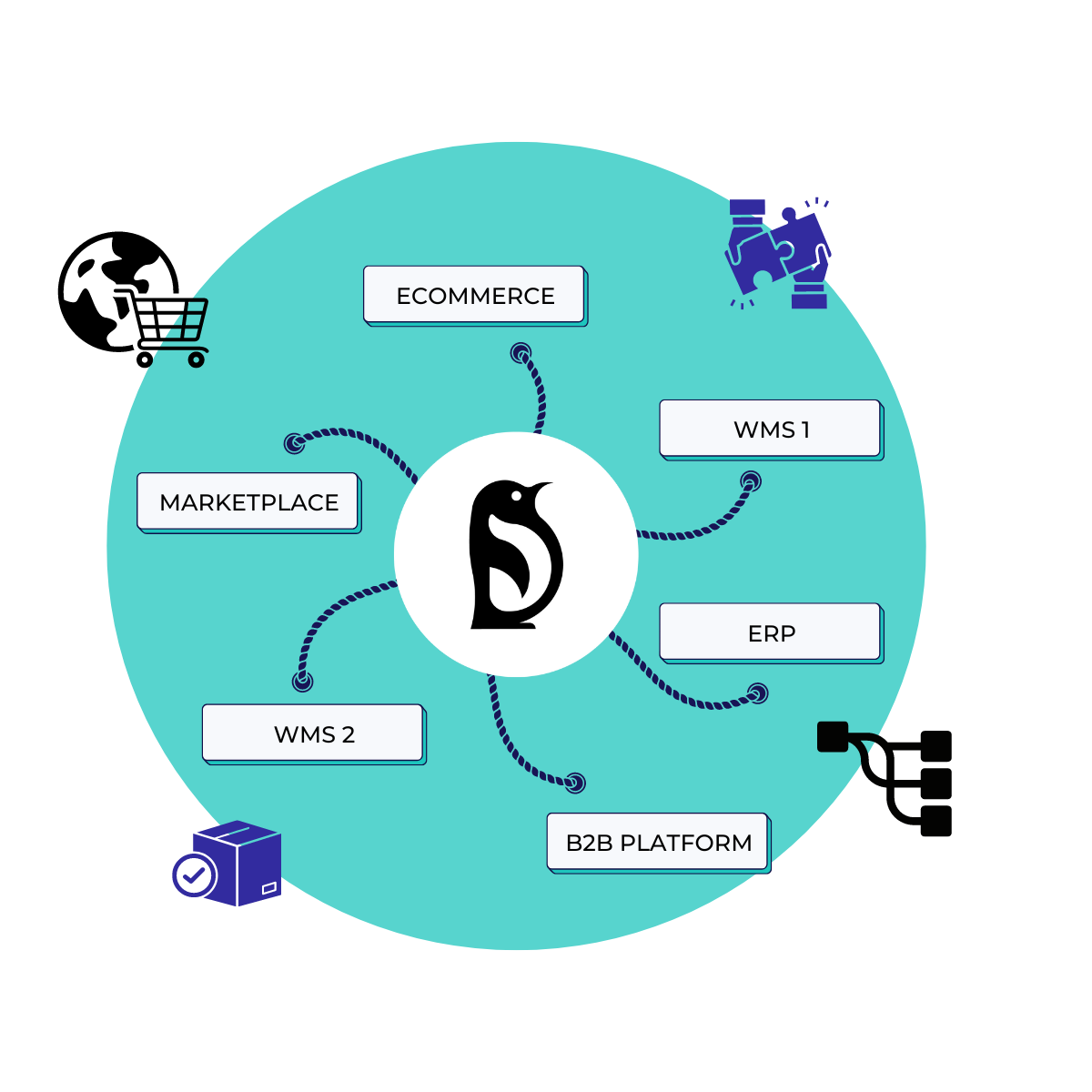How disjointed systems might damage your business
In today’s digital landscape, the integration and coordination of sales tools and technologies are essential for driving business success. However, many companies grapple with a significant challenge: disjointed systems. In this blogpost, we explore the meaning of disjointed systems, the consequences for your business, and how Prime Penguin might be your solution.

How disjointed systems affect your business
The term “disjointed systems” refers to a collection of sales tools and technologies that lack integration, coordination, and seamless connectivity. In a disjointed tech stack, different tools and systems operate in isolation, with limited interoperability between them.
The consequences of this disjointed state are far-reaching. It leads to data fragmentation, inefficiencies, duplicated efforts, and a lack of visibility and collaboration across sales processes. Ultimately, it results in a fragmented and disconnected sales ecosystem that hampers productivity, inhibits effective decision-making, and diminishes the overall effectiveness of sales operations.
Disconnected systems are more of a hindrance than a help. They overshadow valuable insights with difficulties in accessing or actioning the output. Instead of providing insightful business intelligence, a disparate tech stack creates information silos, driving down efficiency as time is lost reconciling data and resolving inaccuracies.
Disjointed systems = bad customer experience
Most concerning of all, the negative impacts extend beyond internal operations to affect customer experience. Operational inadequacies borne from disconnected systems inevitably affect customers’ experience, eroding trust and damaging reputation.
Furthermore, disconnected systems prevent companies from delivering on expectations, particularly in terms of customer experience. Whether it’s legacy ERP systems or multiple tools used for the same functionality, disconnected software cannot provide the outputs required. This could mean orders not being fulfilled quickly enough, new leads going unanswered for too long, vital process steps being missed, or client information not being shared effectively across teams, stores, and regions.
Consider the example of customer communications alone—countless actors affect individual interactions. Ensuring messaging resonates, inspires action, and increases brand loyalty is crucial. Yet, without coordination, interactions can be disjointed and uncoordinated, affecting customer perception of the company.

Costs related to disjointed systems
The financial burden of disconnected systems is substantial. Companies spend significant sums on sales technology, with disjointed systems increasing the cost of operations in various ways:
- Multiple subscriptions and licensing fees: Each tool typically comes with its own subscription or licensing fee, leading to a higher overall cost as organizations pay for each tool separately.
- Integration and maintenance expenses: Integrating and maintaining a disparate tech stack requires additional resources and expertise, adding to the overall expense.
- Data management and cleanup: Disjointed systems result in data duplication, inconsistencies, and inaccuracies, requiring time-consuming and resource-intensive efforts for data management and cleanup.


The easy solution to disjointed platforms
To address this technological dilemma, businesses must take proactive steps. Firstly, evaluate existing systems, eliminate duplication, and ensure integration where necessary. Streamlining is vital, but connecting all relevant data into one central hub is paramount. By coordinating each input into a seamless flow, roadblocks will be removed, and customer satisfaction will increase. This is where Prime Penguin comes in.
Prime Penguin emerges as the ultimate solution to the challenges posed by disjointed systems, offering endless integration capabilities and a powerful, unified platform. With Prime Penguin, businesses can seamlessly connect to multiple systems, including WMS systems, ERP systems, order desks, marketplaces, and B2B platforms.
Why Prime Penguin?
The platform gathers all data in real time, consolidating information from disparate sources into one centralized hub. This ensures that businesses have a comprehensive view of their operations, enabling better decision-making and streamlined processes. By harnessing Prime Penguin’s integration capabilities, companies can break free from the limitations of disconnected systems and unlock new levels of efficiency and productivity.
Furthermore, as an independent actor in the logistics space, you can add, switch, and remove systems from your setup as you grow. By using the Prime Penguin platform as a central hub for your data, the platform facilitates streamlined access through single sign-on functionality. No more information silos or training sessions!

Conclusion
Digital transformation is key to enhancing customer experience. Technology enables seamless interactions powered by accessible, accurate data and automated action. By releasing the shackles of data discrepancies, businesses can free up resources to better serve customers. After all, happier customers equals happier businesses. So, don’t let the familiarity of disconnected systems hold you back—unlock your business potential and watch what happens!
Want to know more? Let’s have a quick chat!
